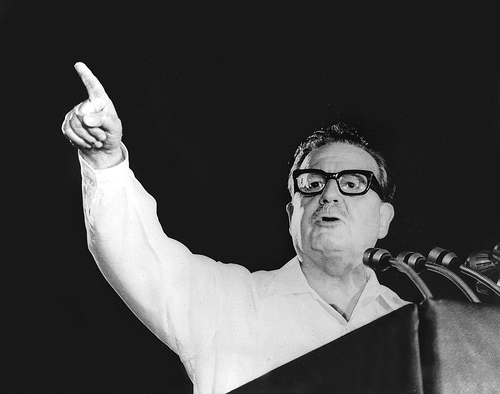
Blog, Brazil, News Briefs, Southern Cone
São Paulo’s Worst Drought In Decades Linked To Rainforest Depletion: Climatologist
November 10, 2014 By Dusty Christensen
South America’s largest city, São Paulo, Brazil, is experiencing a severe water crisis. A record drought and high water demand from the growing city have severely depleted São Paulo’s main reservoir, forcing the president of Brazil’s Water Regulatory Agency to warn citizens that the city might face a “collapse like we’ve never seen before”.
The drought, the worst the city has seen in 80 years, is directly linked to deforestation in the Amazon rainforest and Atlantic forest, according to leading climatologist Dr. Antonio Nobre of the National Institute for Atmospheric Research. Rainforests produce large amounts of vapor that bring rainclouds further inland, providing much-needed water to many areas of the country.
“If deforestation in the Amazon continues,” Nobre told the BBC, “São Paulo will probably dry up.”
As a result of the drought, São Paulo state’s harvests have been damaged, brush fires have increased and officials have begun rationing water in at least 19 cities. The drought’s effects are further exacerbated by São Paulo’s rapid population growth.
São Paulo’s plight exemplifies a broader trend taking place all across the Americas. Multiple countries are experiencing exceptional droughts that have caused governments throughout the region to scramble for answers to increasingly frequent and severe water shortages.
Residents in Colombia’s northern La Guajira province clashed with police in August over claims that the government wasn’t doing enough to help citizens during a more than two-year drought.
That same month, officials at the Panama Canal raised concerns that larger ships would be unable to travel through the waterway after an unusual lack of rain led to very low water levels.
These droughts have had devastating effects on the region’s water and food supplies. Crops have been failing across Central America, leaving more than 2.8 million people hungry, according to the United Nations World Food Program. Increasingly intense droughts in the U.S. southwest have cost farmers billions of dollars in crop failures.
Droughts are just part of a larger picture of climate change in the region. As the planet warms, droughts across the world are expected to increase in intensity and frequency, according to a study published in the scientific journal Nature Climate Change. If climate change continues at its current pace, water shortages are likely to plague Latin America well into the future.
Image: YouTube
About Dusty Christensen
Dusty Christensen is a writer based in New York City, and a producer of LAND's podcast, Radio Dispatch. His work has appeared at The Nation magazine, NPR's Latino USA, Eight by Eight magazine and Alternet, among other places. He speaks English, Spanish, Russian and Ukrainian with varying degrees of success, and is currently a Quechua-language FLAS Fellow at New York University.






1 Comment
[…] and intensity of droughts are exacerbated by climate change. São Paulo is in the midst of its worst drought in 80 years, several Central American countries are experiencing large scale crop losses because of drought and […]
Comments are closed.